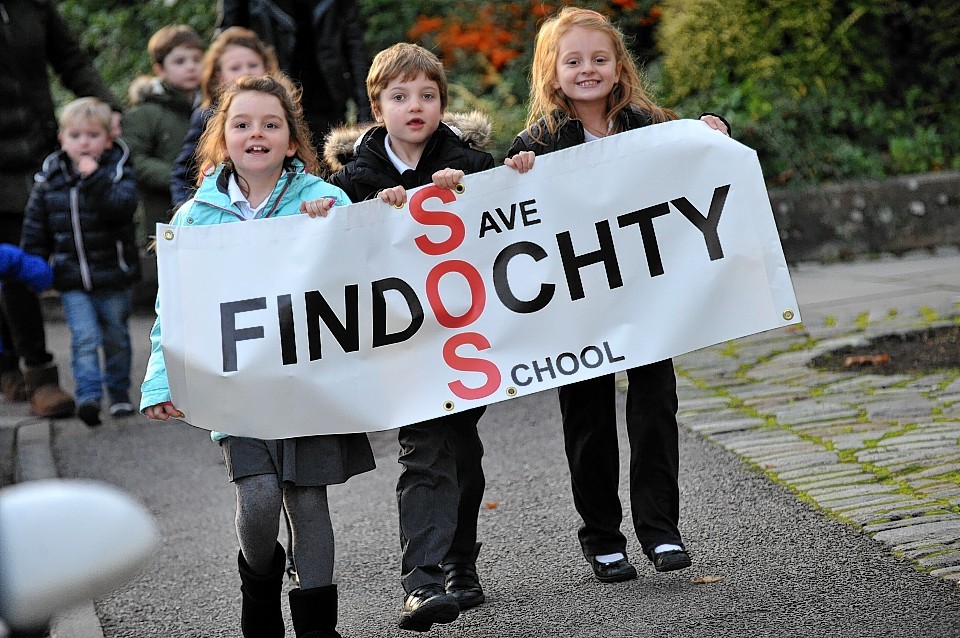Parents fear that smaller primary schools in Moray could be forced to close under a new set of council guidelines.
Councillors yesterday backed a draft policy which sets out criteria that could be used to shut down rural schools.
Primaries of fewer than 90 pupils and secondary schools with rolls of 450 or less may be under threat under the new rules.
Members of the children and young people’s services committee yesterday voted to back the figures.
Last night, Lindsay Watt, parent council member at Findochty School, which has 56 pupils, said she was concerned the new benchmark could spark a fresh battle to preserve the village primary.
Parents successfully campaigned to keep the school open last year.
She said: “This is a worrying time for us again, if the school were to close it would have a knock-on effect for the whole community.
“If Moray Council were to use these guidelines to decide on closing Findochty Primary they would have another fight on their hands.”
The policy will now go out to consultation with parent councils, head teachers and trade unions.
Keith and Cullen councillor Gary Coull said: “The language in this policy is skewed against smaller schools.
“As much as I agree that a policy of some sort is required, I’m not convinced by the detail in this.”
Mr Coull proposed that a decision on the policy be deferred until councillors had gone through workshops on the plans and visited schools that could be affected.
But the motion was defeated by nine votes to six by the committee.
In November, councillors agreed that a policy was required on the sustainability of the region’s schools after a special meeting where at-risk rural primaries were safeguarded for five years.
However, the self-imposed moratorium is not legally binding and can be overturned.
Moray Council’s senior education adviser Paul Watson yesterday stressed that schools would be judged against an extensive set of criteria, and their population alone would not be a deciding factor in whether they were to close.
And independent Forres councillor Anne Skene, who chairs the committee, said: “Though this might ring alarm bells with some people, closure of schools would be a last resort.”
However, Councillor George Alexander, who also represents Forres, said the committee needed to accept the closure of rural primaries was an inevitability.
Mr Alexander said: “I can’t believe anybody thinks that, for the next 40 years, education in Moray will continue in the same buildings.
“We have to be honest, that’s not going to happen.”
